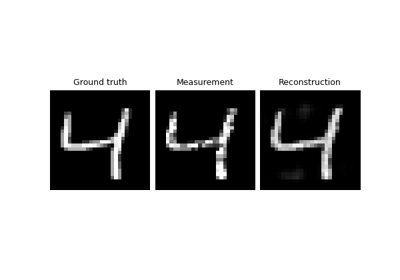Neighbor2Neighbor
- class deepinv.loss.Neighbor2Neighbor(metric: Metric | Module = MSELoss(), gamma=2.0)[source]
Bases:
LossNeighbor2Neighbor loss.
Splits the noisy measurements using two masks \(A_1\) and \(A_2\), each choosing a different neighboring map (see details in “Neighbor2Neighbor: Self-Supervised Denoising from Single Noisy Images”).
The self-supervised loss is computed as:
\[\| A_2 y - R(A_1 y)\|^2 + \gamma \| A_2 y - R(A_1 y) - (A_2 R(y) - A_1 R(y))\|^2\]where \(R\) is the trainable denoiser network, \(\gamma>0\) is a regularization parameter and no gradient is propagated when computing \(R(y)\).
By default, the error is computed using the MSE metric, however any other metric (e.g., \(\ell_1\)) can be used as well.
The code has been adapted from the repository https://github.com/TaoHuang2018/Neighbor2Neighbor.
- Parameters:
metric (Metric, torch.nn.Module) – metric used for computing data consistency, which is set as the mean squared error by default.
gamma (float) – regularization parameter \(\gamma\).
- forward(y, physics, model, **kwargs)[source]
Computes the neighbor2neighbor loss.
- Parameters:
y (torch.Tensor) – Measurements.
physics (deepinv.physics.Physics) – Forward operator associated with the measurements.
model (torch.nn.Module) – Reconstruction function.
- Returns:
(torch.Tensor) loss.
Examples using Neighbor2Neighbor:

Self-supervised denoising with the Neighbor2Neighbor loss.